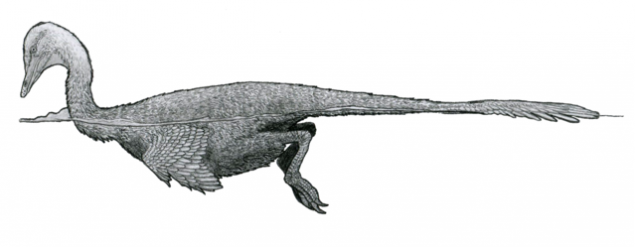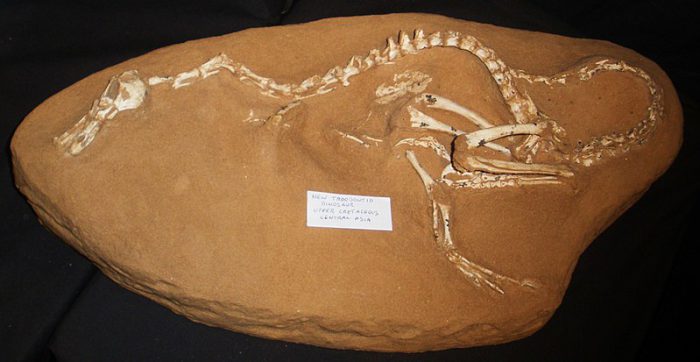Birds and dinosaurs share some similarities. There were duck-billed dinosaurs (hadrosaurs), dinosaurs with feathers, and dinos that looked like modern flightless birds. Some people even like to call today's birds living dinosaurs. But every once in a while, a surprising new fossil comes along that drives home the whole bird and dinosaur connection a little more.
Meet Halszkaraptor escuilliei (say: HALCH-kah-rahp-tur ess-KOOL-yay), one of the only known dinosaurs to have lived on water! With flipper forelimbs and a long neck, you'd be forgiven for thinking it was some kind of lost link to a goose.
Dino the duck

An artist's illustration of how the H. escuilliei may have floated on the water's surface. Does it look familiar? (Tomopteryx/Wikimedia Commons)
Prehistoric marine reptiles are nothing new. Plesiosaurs, mosasaurs, and ichthyosaurs are just some of the many ocean-living animals that shared the planet with the dinosaurs. But Halszkaraptor escuilliei was not a marine reptile. Instead, it was a dinosaur that spent much of its time in water, such as in ponds, rivers, and lakes found in wetlands.
Research indicates that it had an agile body, tiny teeth, and a sensitive face that would have made it an ideal hunter of tiny fish in murky water.
Just like modern water birds such as ducks and swans.
Odd fossil, incredible journey
This part of the world is home to some of the most important fossils found so far this century. (Getty Embed)
It's fitting that such an odd fossil took a strange path to researchers. The bones were found in Mongolia, which, like nearby China, is a hotbed of prehistoric discoveries. But the people who found the fossil weren't paleontologists, they were poachers, or thieves. Fortunately, the stolen bones were discovered and returned to scientists who could properly research and catalogue them.
Learn more about this unique specimen in the video below.
 This incredible fossil was poached from Mongolia before being recovered and returned to scientists. (Ghedoghedo/Wikimedia Commons)
This incredible fossil was poached from Mongolia before being recovered and returned to scientists. (Ghedoghedo/Wikimedia Commons)










WOW!!! A new DINOSAUR!!!
haha…who names their article duck ,duck, goose…er…dinosaur! hahahahahhahahhah